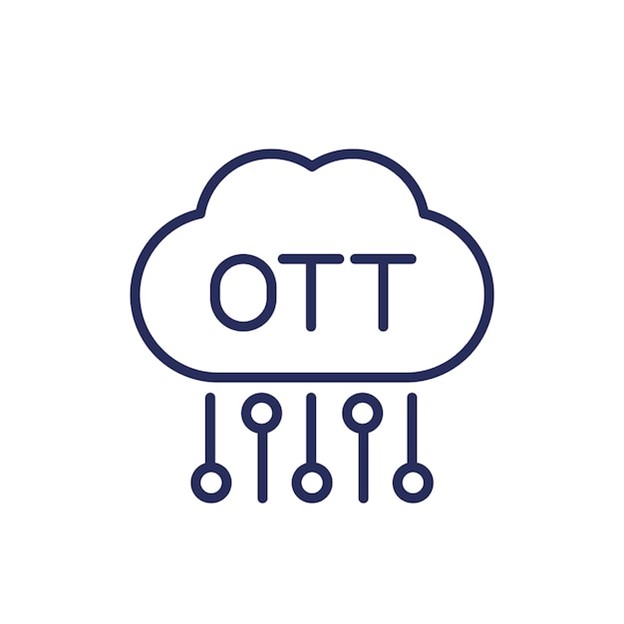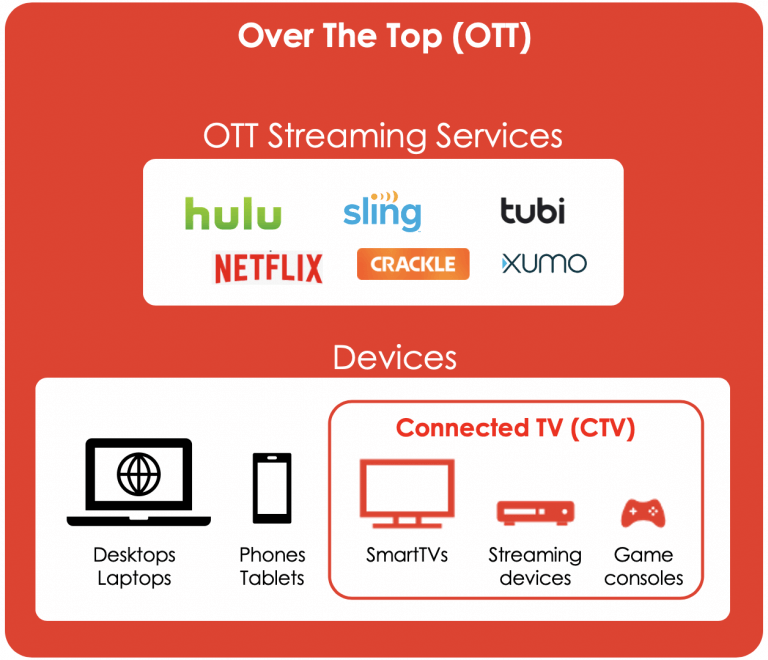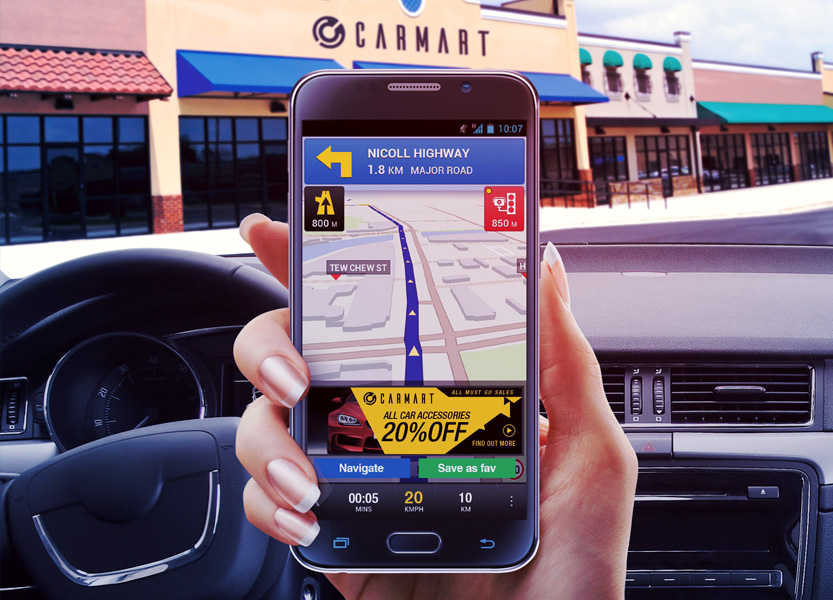OTT Media Buying: Reaching Your Target Audience in the Digital Age
In the rapidly evolving media landscape, OTT media buying has emerged as a game-changer for advertisers seeking to reach their target audience through digital channels.
As more and more consumers turn to over-the-top (OTT) platforms like Netflix, Hulu, and Amazon Prime for their entertainment needs, the opportunities for advertisers to connect with their desired viewers have never been greater.

Understanding OTT Media and its Benefits
OTT, or over-the-top media, refers to the delivery of video content over the internet, bypassing traditional cable or satellite providers. This allows viewers to stream their favorite shows and movies on-demand, anytime and anywhere. With the rise of smart TVs, streaming devices, and mobile devices, OTT has become a popular choice for consumers, offering convenience, flexibility, and a wide range of content options.
For advertisers, OTT media offers a unique opportunity to engage with audiences in a highly targeted and personalized way. Unlike traditional TV advertising, where ads are broadcast to a broad and often uninterested audience, OTT media buying allows brands to deliver ads directly to viewers who are already engaged and actively consuming content. This not only increases the chances of capturing viewers’ attention but also enables advertisers to deliver more relevant and impactful messages.
Moreover, OTT media buying provides advertisers with valuable data and insights. By leveraging sophisticated data analytics and audience segmentation, brands can ensure their messages are delivered to the right people, at the right time, and in the right context. This level of precision targeting not only maximizes the impact of advertising campaigns but also helps optimize ad spend and drive higher ROI.

The Rise of OTT Platforms
The popularity of OTT platforms has skyrocketed in recent years, driven by advancements in technology, the increasing availability of high-speed internet, and changing consumer preferences. According to a report by eMarketer, the number of OTT video service users in the United States alone is projected to reach 235.5 million by 2022, making it a powerful channel for advertisers to tap into.
Leading the pack are streaming giants like Netflix, Hulu, and Amazon Prime, which have revolutionized the way we consume entertainment. These platforms offer a wide variety of content, from original series and movies to documentaries and live events. In addition to these subscription-based services, there are also ad-supported OTT platforms that provide free access to content in exchange for advertising.
As the number of OTT platforms continues to grow, advertisers have an ever-expanding array of options to choose from. This diversity allows brands to align their advertising strategies with the specific demographics, interests, and viewing habits of their target audience, ensuring maximum relevance and impact.

OTT Media Buying Process
To effectively leverage the opportunities offered by OTT media, advertisers need to have a clear understanding of the media buying process. The OTT media buying process involves several key steps, each crucial to the success of advertising campaigns.
The first step is defining campaign objectives and identifying the target audience. Advertisers need to determine what they want to achieve with their campaigns, whether it’s increasing brand awareness, driving product sales, or promoting a specific offer. Understanding the target audience is equally important, as it allows advertisers to tailor their messages and creative assets to resonate with the viewers.
Once the objectives and target audience are defined, advertisers can move on to selecting the right OTT platforms and publishers. This involves evaluating factors such as platform reach, content relevance, ad formats, and pricing models. Advertisers should consider the demographics and interests of their target audience, as well as the overall brand fit with the platform’s content.
After selecting the platforms, advertisers need to negotiate and secure ad placements. This involves working closely with the platform’s sales representatives to determine the best ad formats, placements, and durations for the campaign. Advertisers should also consider factors like ad frequency, competitive clutter, and the viewer experience to optimize the effectiveness of their ads.
Once the ad placements are secured, advertisers can then proceed to the creative development stage. This involves crafting compelling ad copy, designing eye-catching visuals, and incorporating interactive elements where applicable. Advertisers should pay close attention to the creative assets, ensuring they align with the brand’s messaging and evoke the desired emotions in viewers.
Finally, advertisers need to implement tracking and measurement solutions to monitor the performance of their campaigns. This involves setting up tracking pixels or SDKs to collect data on ad impressions, clicks, conversions, and other relevant metrics. By analyzing these metrics, advertisers can gain valuable insights into the effectiveness of their campaigns and make data-driven optimizations to improve performance.

Targeting and Audience Segmentation in OTT Media Buying
One of the key advantages of OTT media buying is the ability to target specific audiences with precision. By leveraging advanced data and audience segmentation techniques, advertisers can ensure their ads are delivered to the right people, at the right time, and in the right context.
Audience segmentation involves dividing a target audience into distinct groups based on shared characteristics, such as demographics, interests, behaviors, or purchase intent. This allows advertisers to tailor their messages and creative assets to resonate with each segment, increasing the relevance and effectiveness of their ads.
To achieve effective audience segmentation in OTT media buying, advertisers can leverage a combination of first-party, second-party, and third-party data. First-party data refers to data collected directly from the advertiser’s own channels, such as website visitors, app users, or customer databases. Second-party data is acquired from trusted partners or publishers, while third-party data comes from external data providers.
By analyzing these data sources, advertisers can gain insights into the preferences, behaviors, and characteristics of their target audience segments. This allows them to create highly targeted campaigns that deliver the right message to the right people, maximizing the chances of engagement and conversion.

Ad Formats and Placements in OTT Media Buying
OTT media buying offers a range of ad formats and placements, each with its own strengths and considerations. Advertisers need to understand these options and select the most appropriate ones based on their campaign objectives, target audience, and creative assets.
One of the most common ad formats in OTT media buying is the pre-roll ad. These ads play before the start of the streaming content and are usually non-skippable, ensuring maximum exposure. Pre-roll ads can be effective for brand awareness campaigns or delivering short and impactful messages to viewers.
Mid-roll ads, on the other hand, are inserted during a natural break in the streaming content, such as a commercial break in a TV show or movie. These ads provide an opportunity for longer-form storytelling and can be effective for driving engagement and consideration.
Another popular ad format is the post-roll ad, which plays at the end of the streaming content. These ads can be effective for driving conversions or promoting a call-to-action, as viewers have already consumed the main content and may be more receptive to taking action.
In addition to these traditional ad formats, OTT media buying also offers interactive and immersive ad experiences. For example, advertisers can incorporate interactive overlays or branded content integrations to engage viewers and create a more memorable brand experience.
When it comes to ad placements, advertisers can choose between broad or contextual targeting. Broad targeting involves delivering ads to a wide range of viewers, regardless of their specific interests or behaviors. This can be effective for reaching a large audience but may result in lower relevance and engagement. Contextual targeting, on the other hand, involves delivering ads based on the context of the content being viewed, such as targeting sports-related ads during live sports events.

OTT Media Buying Metrics and Measurement
To evaluate the effectiveness of OTT media buying campaigns, advertisers need to track and measure key metrics. These metrics provide insights into the performance of campaigns and help advertisers make data-driven optimizations to improve results.
One of the primary metrics in OTT media buying is ad impressions, which refers to the number of times an ad is viewed by a viewer. Ad impressions can help advertisers understand the reach and exposure of their campaigns, as well as the frequency at which viewers are exposed to their ads.
Click-through rate (CTR) is another important metric, which measures the percentage of viewers who clicked on an ad after viewing it. A high CTR indicates that the ad was compelling and engaging enough to prompt viewers to take action, while a low CTR may indicate that the ad was not resonating with the audience.
Conversion rate is a key metric for advertisers looking to drive specific actions, such as product purchases or sign-ups. Conversion rate measures the percentage of viewers who took the desired action after viewing an ad. By tracking conversion rates, advertisers can assess the effectiveness of their campaigns in driving desired outcomes.
Other important metrics in OTT media buying include completion rate (the percentage of viewers who watched an ad until the end), viewability (whether an ad was actually viewable to the viewer), and engagement metrics such as time spent watching, social shares, or comments. By analyzing these metrics, advertisers can gain a comprehensive understanding of their campaign performance and identify areas for improvement.

Challenges and Considerations in OTT Media Buying
While OTT media buying offers numerous benefits, it also comes with its own set of challenges and considerations. Advertisers need to be aware of these factors to ensure the success of their campaigns.
One challenge in OTT media buying is ad fraud. Ad fraud refers to the deliberate falsification or manipulation of ad metrics, such as ad impressions or clicks, to deceive advertisers. Advertisers should work with trusted partners and platforms that have robust fraud detection and prevention measures in place to minimize the risk of ad fraud.
Another consideration is ad blocking. With the increasing prevalence of ad-blocking software and browser extensions, some viewers may choose to block ads altogether. Advertisers should be mindful of this and explore alternative strategies, such as branded content or sponsorships, to reach these audiences.
Privacy and data protection are also important considerations in OTT media buying. Advertisers need to ensure they comply with relevant regulations, such as the General Data Protection Regulation (GDPR) in the European Union, when collecting and using viewer data for targeting and personalization purposes.
Furthermore, advertisers should be mindful of the viewer experience when designing and delivering ads. Overly intrusive or irrelevant ads can lead to viewer annoyance and, in some cases, ad avoidance. Advertisers should strive to create ads that are engaging, relevant, and seamlessly integrated into the viewing experience.

OTT Media Buying Best Practices
To make the most of their OTT advertising efforts, advertisers should follow some best practices to optimize campaign performance and drive real results. Here are some key recommendations:
- Know your audience: Invest time in understanding your target audience’s demographics, interests, and viewing habits. This will help you tailor your messages and creative assets to resonate with them.
- Leverage data and segmentation: Use advanced data analytics and audience segmentation techniques to deliver personalized and targeted ads. By understanding your audience segments, you can optimize your campaigns for maximum relevance and impact.
- Experiment with ad formats: Don’t be afraid to try different ad formats and placements to see what works best for your campaign objectives and target audience. Test and iterate to find the winning combination.
- Optimize creative assets: Pay close attention to your ad copy, visuals, and interactive elements. Ensure they align with your brand’s messaging and evoke the desired emotions in viewers.
- Track and measure performance: Implement tracking and measurement solutions to monitor the performance of your campaigns. Analyze key metrics and make data-driven optimizations to improve results.
- Stay up-to-date with industry trends: The OTT landscape is constantly evolving, with new platforms, technologies, and ad formats emerging. Stay informed about the latest trends and innovations to stay ahead of the competition.
- Work with trusted partners: Choose platforms and partners that have a strong reputation and track record in OTT media buying. Collaborate closely with them to ensure the success of your campaigns.

Conclusion: The Future of OTT Media Buying
OTT media buying has transformed the advertising landscape, providing advertisers with unprecedented opportunities to reach their target audience through digital channels. With the ability to deliver personalized and targeted ads directly to viewers as they stream their favorite shows and movies, advertisers can maximize the impact of their campaigns and drive real results.
As the popularity of OTT platforms continues to grow, advertisers need to embrace the intricacies of OTT media buying to stay ahead of the competition. By understanding the key strategies, best practices, and challenges involved, advertisers can make informed decisions and create effective campaigns that resonate with their target audience.
The future of OTT media buying is bright, with advancements in technology, data analytics, and audience segmentation opening up new possibilities for brands. By staying agile, creative, and customer-centric, advertisers can leverage the exciting possibilities of OTT media buying and achieve remarkable success in this ever-expanding digital landscape.

